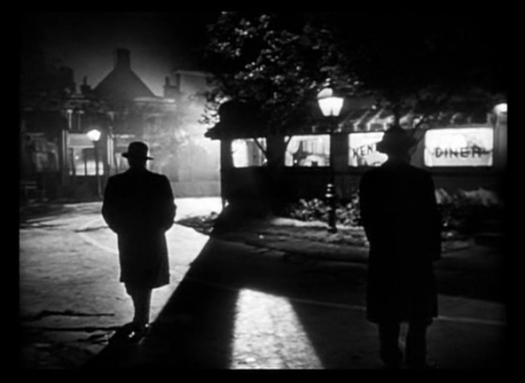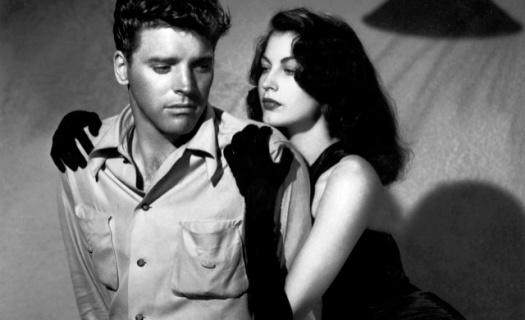Producer Mark Hellinger, who brought you the film noir classics THE KILLERS and BRUTE FORCE , traveled to the mean streets of New York City to shoot NAKED CITY, along with director Jules Dassin and a solid cast led by Barry Fitzgerald. The movie, though fiction, is shot in docu-drama style, with Hellinger himself providing narration throughout. It was an attempt to do something boldly different with the genre, and it succeeds thanks to the talents in front and behind the cameras.
Beautiful young model Jean Dexter is found by her housekeeper brutally murdered in the bathtub. The homicide squad, with veteran Lt. Dan Muldoon and rookie detective Jimmy Halloran, gets to work investigating the case. They discover Jean had been seeing a mysterious man from Baltimore named Henderson. The team then begins the slow, methodical process of catching a killer, pulling on the loose strings of Dexter’s life. Their number one suspect becomes lying young wastrel Frank Niles, engaged to Dexter’s model friend Ruth Morrison. Through dogged determination and old-fashioned footwork, they’re led to a harmonica-playing ex-wrestler named Willie Garzah, who leads them on a chase through the gritty streets of New York, winding up on top of the Williamsburg Bridge, where the real murderer is finally shot down and killed.
Barry Fitzgerald excels as the no-nonsense veteran cop. Lt. Dan Muldoon is a far cry from his Father Fitzgibbon in GOING MY WAY or Michaleen Oge Flynn in THE QUIET MAN , but Fitzgerald still displays that old Irish charm. His partner Halloran is played by Don Taylor, whose star would soon be on the rise in films like FATHER OF THE BRIDE and STALAG 17. It fell just as quickly, and Taylor turned to directing, helming ESCAPE FROM THE PLANET OF THE APES, THE GREAT SCOUT & CATHOUSE THURSDAY, and ISLAND OF DR. MOREAU among others. Howard Duff’s star was also on the rise as the cad Niles; Duff would later star in his own police procedural TV series THE FELONY SQUAD.
Ted de Corsia makes a most memorable villain as the brutish Willie Garzah. Though Garzah is spotted throughout the film, our first real encounter finds Halloran tracking the thug to his sparse apartment, where he’s stripped to the waste and incessantly working out. After rabbit-punching Halloran into unconsciousness, Garzah takes it on the lam. He’s so mean he even kills a seeing-eye dog along the way before going down in a blaze of inglory atop the Williamsburg Bridge. De Corsia (who also appeared in the noirs LADY FROM SHANGHAI, THE ENFORCER, THE BIG COMBO, THE KILLING, and several Westerns) makes Willie Garzah one of the vilest villains in film noir history, and that’s saying a lot!

“There are eight million stories in the Naked City”, and it seems there are also as many Familiar Faces roaming its streets, many of whom make their Silver Screen debuts. Among the throng of humanity you’ll spot cast members Dorothy Hart, Frank Conroy, and House Jameson, and in smaller bits Jean Adair, Walter Burke , Paul Ford , Kathleen Freeman , Bruce Gordon, James Gregory , Robert H. Harris, Enid Markey (who was Tarzan’s first Jane opposite Elmo Lincoln back in 1918!), John Marley, Arthur O’Connell, David Opatoshu, Nehemiah Persoff, Molly Picon, and John Randolph. A special Cracked Rear Viewer round of applause goes to actors Adelaide Klein and Grover Burgess as the victim’s parents; their few scenes are brief but packed with such raw emotion I felt I just had to give them a shout-out!

The screenplay by Albert Maltz and Marvin Wald was inspired by a book of photographs titled NAKED CITY by famed photojournalist Weegee , noted for his uncompromising pictures of life in the urban jungle. The film earned two Academy Awards, for William Daniels’ stark cinematography and Paul Wetherwax’s precise editing, and spawned a later television show in the late 50’s/early 60’s. The score is credited to both Miklos Rozsa and Frank Skinner, but who is responsible for what I just don’t know. NAKED CITY was Mark Hellinger’s last film; he died of a heart attack while watching the final cut three months before it’s release. He certainly went out on a high note, as the film has become one of the most influential of its ilk. The New York locations make this a must for history buffs and film buffs alike, giving us an up-close-and-personal look at a bygone era as well as one of the greatest films noir of all time.


















